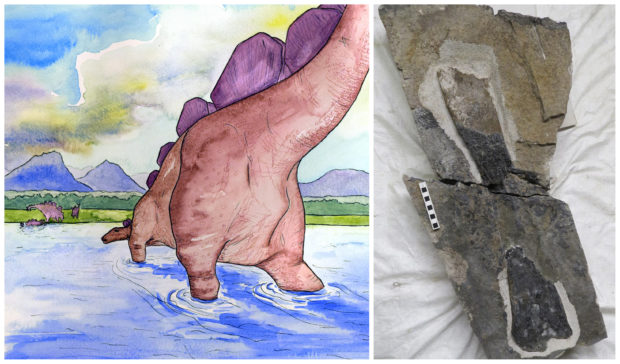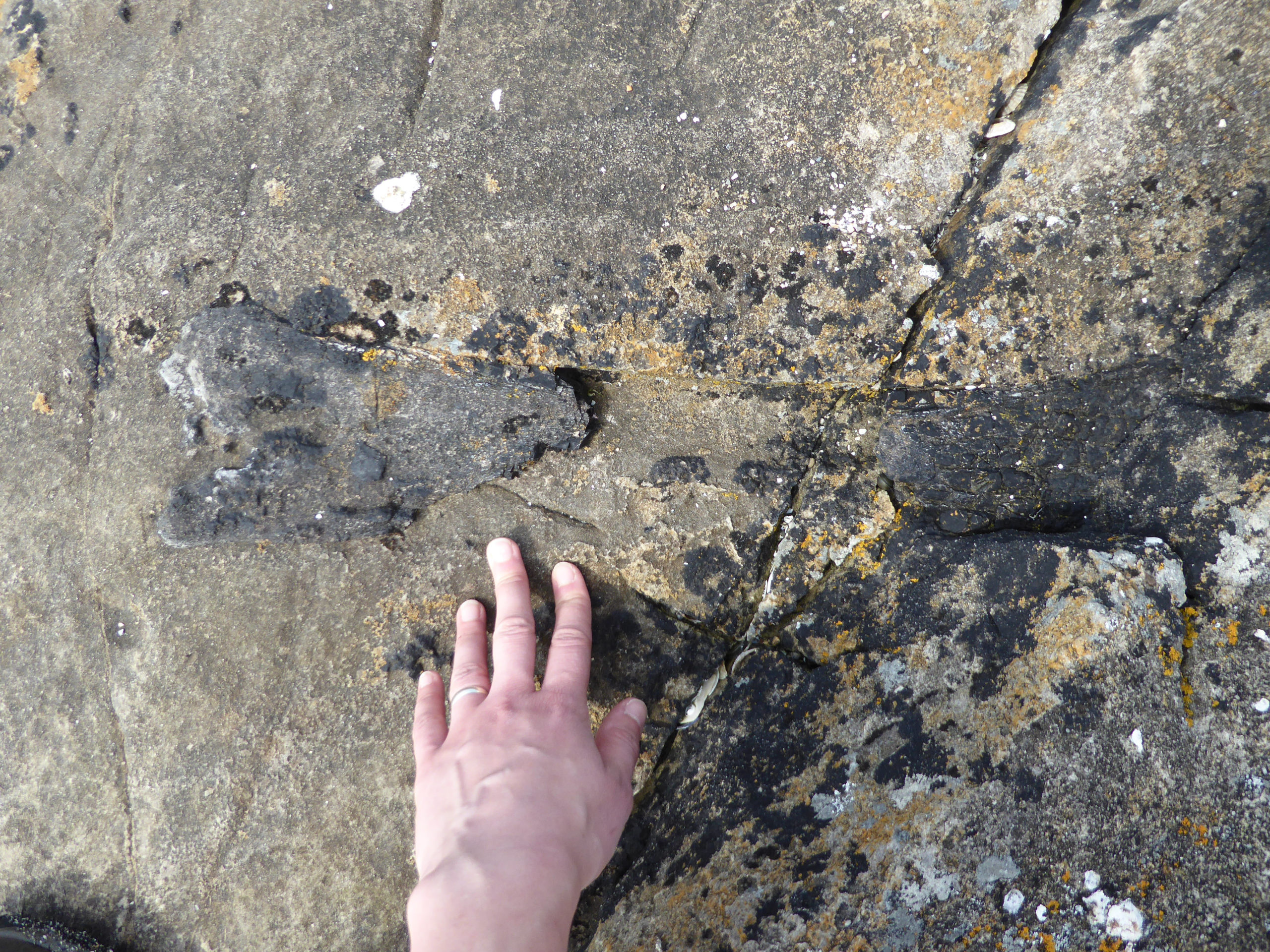
The first fossil of a Jurassic dinosaur has been found on the Isle of Eigg.
The limb bone, thought to belong to a stegosaurian dinosaur, was unearthed by researchers from a boulder on the foreshore.
It’s the first time such a fossil has been discovered in Scotland outwith Skye.
The bone, which is just over half a metre long, had been badly damaged by the action of the waves, but there was enough remaining for a team of palaeontologists to study.
They extracted the bone and brought it to the laboratory to be removed from the rock.
They then used the shape of the bone, coupled with the microstructure of the bone itself, to determine that it was part of the hind limb of a stegosaur.
Dr Elsa Panciroli, Research Affiliate at National Museums Scotland, who discovered the bone said: “This is a hugely significant find. Globally, Middle Jurassic fossils are rare and until now the only dinosaur fossils found in Scotland were on the Isle of Skye.
“This bone is 166 million years old and provides us with evidence that stegosaurs were living in Scotland at this time.
“In 200 years of searching no-one has found a dinosaur before, so this is quite special.”
Dr Panciroli says she discovered the bone by chance, and that its discovery adds significant new information to our understanding of the time period.
She said: “It was a bit of a serendipitous discovery. I was running along the shore on my way back to meet the rest of the team and I ran right over it.
“It wasn’t clear exactly what kind of animal it belonged to at the time, but there was no doubt it was a dinosaur bone.
“The Middle Jurassic was a really interesting time for animals of all kinds. They were diversifying into lots of different groups and developing new ecologies – ways of life – to exploit their environment. Every fossil we find adds a significant new piece of information to our understanding of the time period and the course of evolution.”
The fossil dates to the middle of the Jurassic, the same age as similar fossils found on the nearby Isle of Skye.
The Isle of Eigg is already known for its Jurassic fossils, particularly marine reptiles and fish. These were first discovered by nineteenth century geologist and writer, Hugh Miller.
Dr Steve Brusatte from the University of Edinburgh said: “Elsa’s discovery of this bone is really remarkable. Nobody, not even Hugh Miller himself, had found dinosaur bones on Eigg before.
“This fossil is additional evidence that plate-backed stegosaurs used to roam Scotland, which corroborates footprints from the Isle of Skye that we identified as being made by a stegosaur.”
The bone is now in the collections of National Museums Scotland in Edinburgh. A 3-D model of the bone, created by co-author Matthew Humpage, is available to view and download for free online here.
The fieldwork on the Isle of Eigg was funded by the National Geographic Society, and took place with permission from The Isle of Eigg Heritage Trust.
The full paper is published in Earth and Environmental Transactions of the Royal Society of Edinburgh (EESTRSE) and is available here.

Enjoy the convenience of having The Sunday Post delivered as a digital ePaper straight to your smartphone, tablet or computer.
Subscribe for only £5.49 a month and enjoy all the benefits of the printed paper as a digital replica.
Subscribe © S. Brusatte / National Museums of Scotland
© S. Brusatte / National Museums of Scotland © Dr Elsa Panciroli / National Museums of Scotland
© Dr Elsa Panciroli / National Museums of Scotland